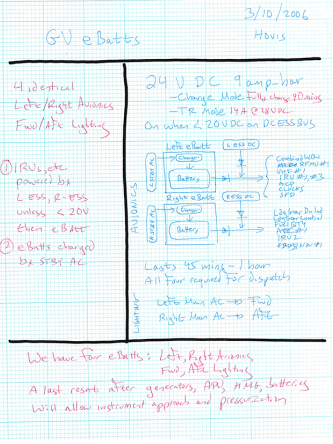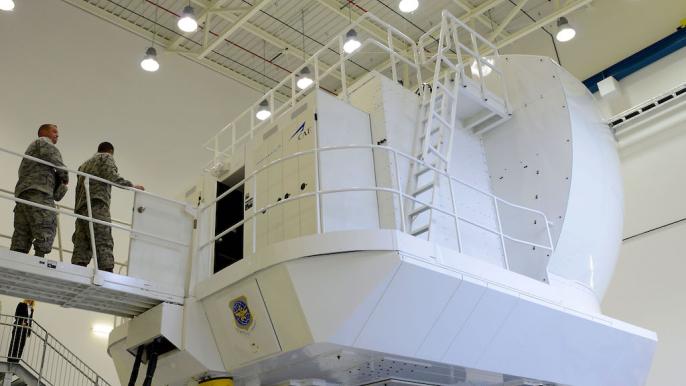
Congratulations on the new job! You have a lot of challenges in front of you, but with the right attitude and some effort you can progress from the newest kid on the block to one of the organization’s star players. But remember that you have more than the airplane to learn. You also have to learn company procedures and how to deal with the people with whom you work.
The normal progression for new pilots is to go to aircraft initial training to get whatever ratings and licenses are needed to legally fly the aircraft. Then you return to the flight department where you get immersed in local flight procedures and company standard operating procedures (SOPs). Along the way, you learn about your peers, your managers and those who will be working for you.
Getting Ready for School
You may be reluctant to ask the pilots in your flight department about the training to come, fearing that you may appear intimidated by the training or somehow unqualified for the job. But if you don't ask, you could be setting yourself up to make the same mistakes they might have made. I have always asked, but I tended to ask the wrong questions. "How was it?" "It was OK, same old stuff." "Was it hard?" "Not really." "What should I study?" "Everything."
Even the right questions posed to the wrong person can yield useless answers. Try to identify someone who attended the course recently and ask specific questions that can't be answered with a shrug of the shoulders and simple responses. For example:
(1) Are any of the aircraft systems unusual compared to what I've flown in the past? How so?
(2) Will the training emphasize aircraft systems, avionics or flight procedures? Will the training neglect any of these?
(3) Do you have any study guides or other reference materials I can borrow?
(4) Did the training let you down when preparing for the written, oral or flight evaluations? How could the training have been better, and how can I make up for these deficiencies?
(5) What can I do in training to better prepare me for this job?
Ground School and Note-Taking
Most aircraft training begins in the classroom and is followed by the simulator. (Actual training in the aircraft is usually saved for after formal type-rating training.) After two or three type ratings, it would be easy to be lulled into complacency. “I’ve done this before.” You may be tempted to think the first few days of class are unimportant and that you don't really have to worry until you get into the simulator. I've heard this from a lot of fellow students: "I learn better by doing than thinking." This is precisely wrong.
The sooner you get the "book learning" down, the easier the flying will be. For example, memorizing aircraft limitations may seem mundane and, in the days of computerized jets, unnecessary. But knowing flap airspeed limitations will make your very first approach and landing easier. The syllabus at your next course may not be perfectly designed, but it has been used before. Attempting to learn as the course is designed should be a good start and that usually involves a lot of note-taking. Unfortunately, most of us have never learned how to do this effectively.

As is typical with most engineering students, I took notes in college, writing things as quickly as I could during class, not applying any mind-power to what was happening at the moment of notetaking. The act of writing shut down further learning until the writing was complete. These notes tended to be sloppy and, as a result, useless for later reference. Lost on many of us is that note-taking serves two purposes. Yes, you can refer to the notes to remember something previously taught and serve as a study guide for exams. But there is another purpose: The very act of taking the note helps you to learn.
I've found the best technique to do this is with a system invented by a Cornell University professor and since given the name “Cornell Notes.” The crux of the method is that you are in class to learn, and your notes only capture the "gist" of what is being said. Contrary to my previous methods, the only real verbatim note-taking involves those things that you might not be able to get anywhere else. Once the notes are taken, you fill in any missing details preferably right after class but certainly no later than at the end of the day.
You prepare your notepaper by drawing a line across the top, above which you give the notes a title and add the date and the person giving the class. You draw another line across the bottom, below which you can add any concluding thoughts following the class and your further research. Then a vertical line separates the middle section. The notes you take during the class go to the right and any further research goes to the left. I find it helpful to use one color for the “live” notes and another for any additions after class. The result is that you can pay closer attention during class, you fill in any notetaking gaps afterward, and you end up with a final product that can be better organized and provide easier-to-use study material--weeks, months and even years later.
The technique paid dividends for me when I went through GV initial in 2006. I was pleased to see Gulfstream had finally fixed the Rube Goldberg-esque electrical systems of earlier aircraft. Just about all the GV aircraft systems were models of efficiency and elegant design. I grasped everything quicky until the instructor explained the emergency batteries. He led off with a list of components that seemed unrelated. Most of the class dutifully copied the list, which was also in our manuals. I think most of us, myself included, were confused. The instructor thought about it for a few seconds and then drew a diagram that didn't appear in any of our texts. I noticed many of my fellow students were still busy writing down the component list and specs and few bothered with the diagram. I copied the diagram precisely and later filled in as many details as I could. My classmates got bogged down by details when the big picture was truly more instructive. A few weeks later, in the simulator, my simulator partner still struggled with the system until I showed him my diagram. “My” diagram was passed from student to student and years later during recurrent, the instructor referred to it as my creation. Of course, it wasn’t. The only credit I deserved was that I captured another instructor’s ad hoc effort onto paper.
The Simulator

Simulator time is expensive and is therefore limited. There are few things more frustrating than watching a pilot struggle with basic cockpit systems checks that should have been mastered in the procedures trainer or on the Day One simulator ride, robbing them of instrument approaches or emergency procedures on Day Four or Five. It is trendy for training programs to publish a list of training objectives for each event, and it is tempting to skip over these for the meat of the material. But it is a good idea to look at these to self-evaluate your progress. If you don't feel you've achieved a training objective by the time the syllabus calls for, you should put in some time and effort to fix this before your next sim period.
I learned this lesson early on when my Air Force pilot training class transitioned from the slovenly subsonic Cessna T-37 to the sleek and supersonic Northrop T-38 Talon. After my first simulator session, my instructor said that the sooner I had every cockpit switch position memorized, the sooner I could get on with really learning to fly the jet. So, I spent the weekend building a cardboard mockup of the cockpit and practiced basic procedures "in situ" before my next sim session. Getting the switchology down early made the next steps easier and allowed me to graduate to the next lesson sooner. I soloed early and graduated from basic aerobatics while most others were still trying to pass the first check ride. When I eventually struggled in the formation phase, I was so far ahead of the curve my instructor had more time to devote to the hard stuff, since the easy stuff was already mastered.
In Part 2, we’ll discuss preparing for your flight evaluation and learning your new employer’s SOPs.





